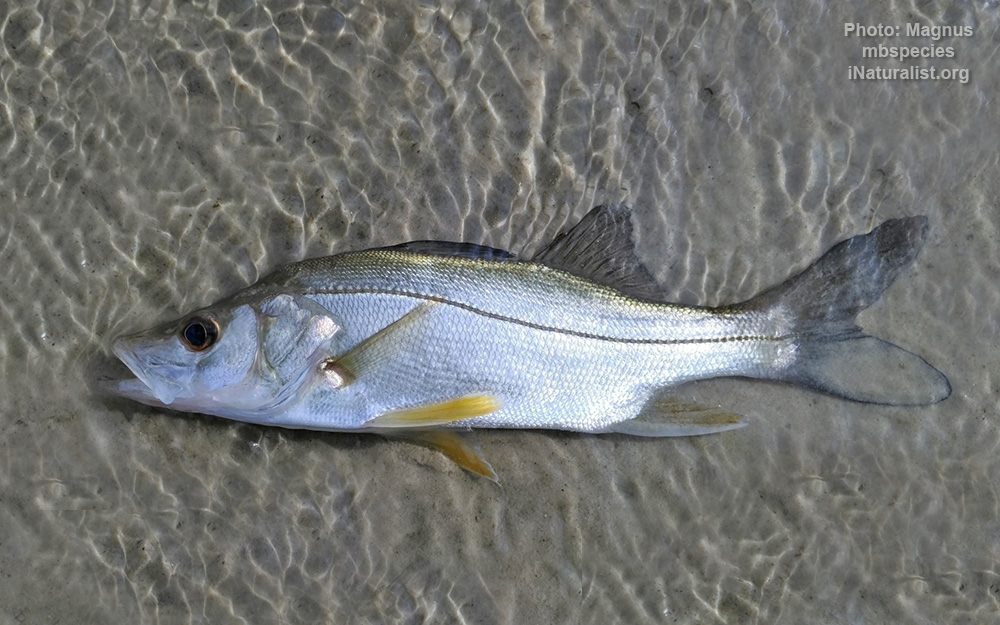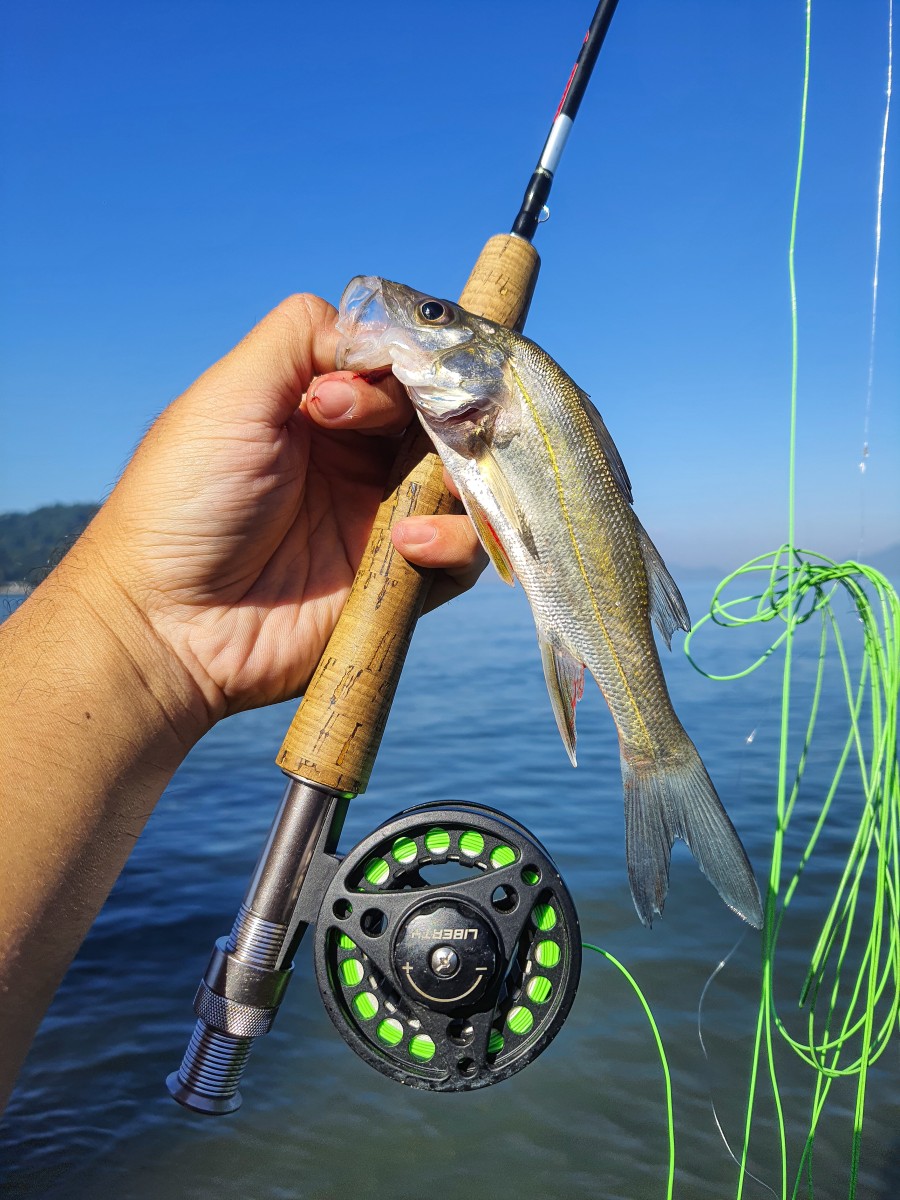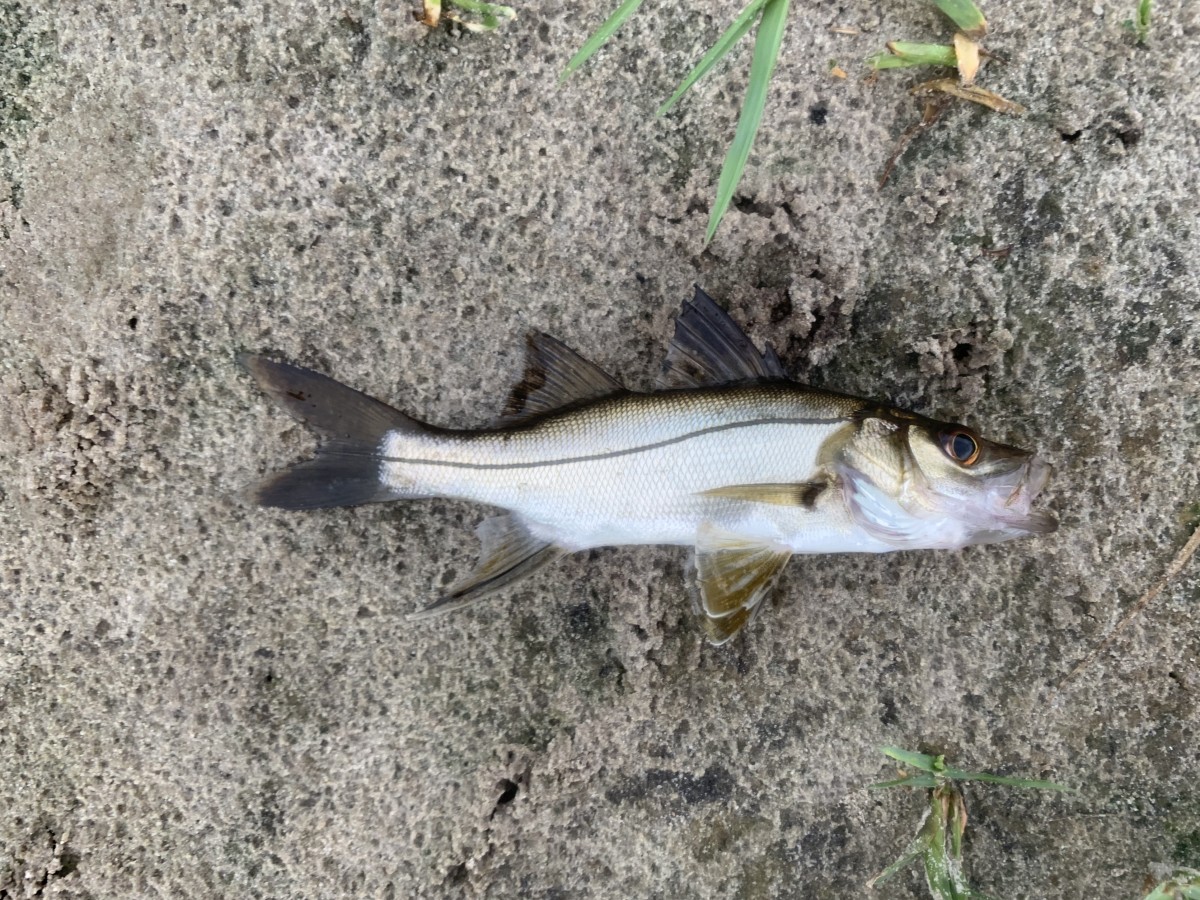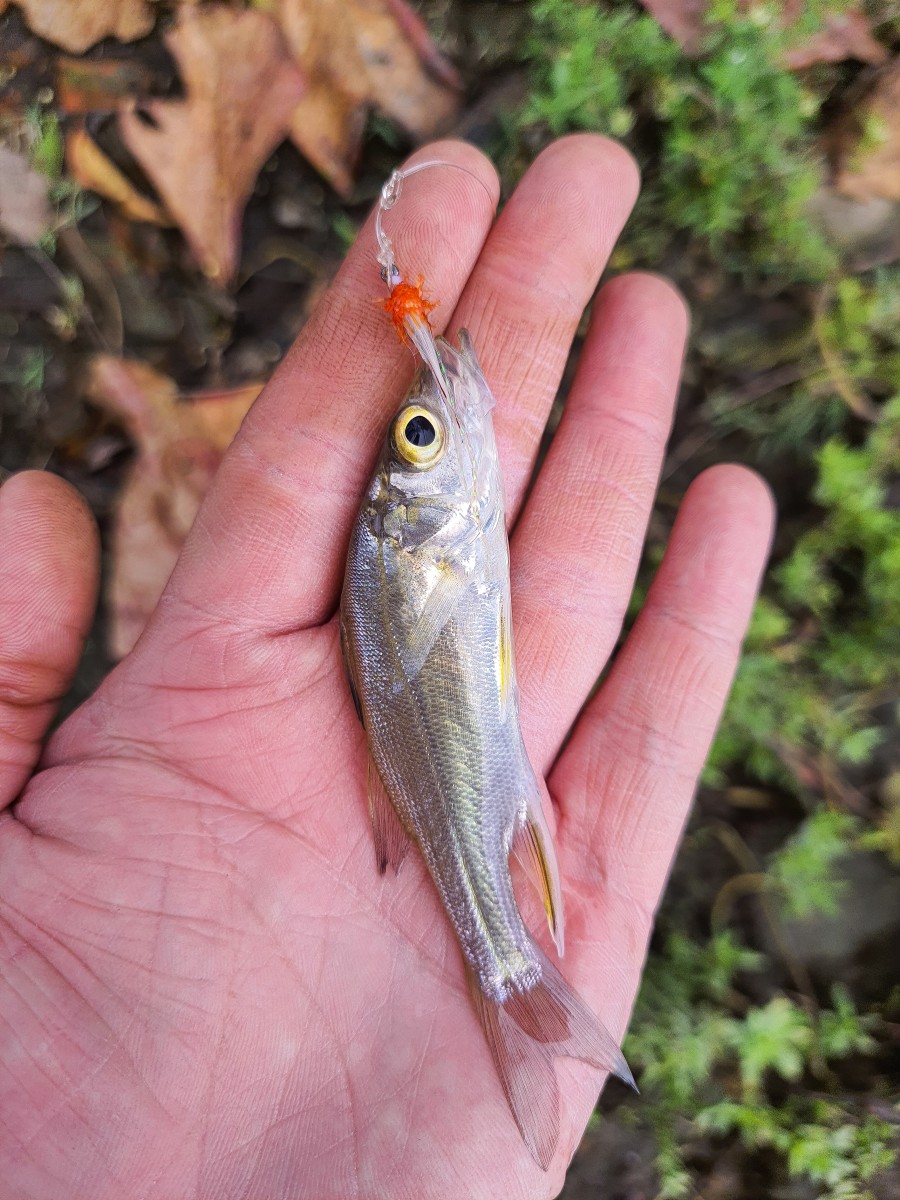Fat snook
(Centropomus parallelus)

Classification
General data
Centropomus parallelus is a species of fish in the family Centropomidae, the snooks and robalos. It is known by several common names, including fat snook, smallscale fat snook, little snook, and chucumite. It is native to the western Atlantic Ocean and Gulf of Mexico, its distribution extending from southern Florida in the United States to southern Brazil near Florianópolis.
Description
This fish is generally up to 25 cm long, but it has been known to reach 72 cm. The maximum published weight is 5 kg. Like other snooks, it has a large head with a long, pointed snout and large, laterally positioned eyes. The large mouth has bands of villiform teeth. The body is yellowish brown to brownish green in color. It has a silvery sheen on the sides and belly and a dark line along the lateral line.
Biology
This fish can tolerate a wide range of salinities and can be found in fresh, brackish, and marine waters. It can venture into high-salinity lagoons. It lives in many kinds of coastal habitat and is most often seen in fresh and mildly brackish water habitat types. It spawns in the brackish waters of estuaries. This species is protandric, which means that some of the males change sex into females.
This species is a carnivore with crustaceans making up a large part of its diet. In experimental conditions, fat snook feed during the day, but during times of lower light, in the early morning and late afternoon.
Recreational fishing for fat snook is growing in popularity in Brazil, where fishing tournaments target this species and congeneric common snook (C. undulatus).














